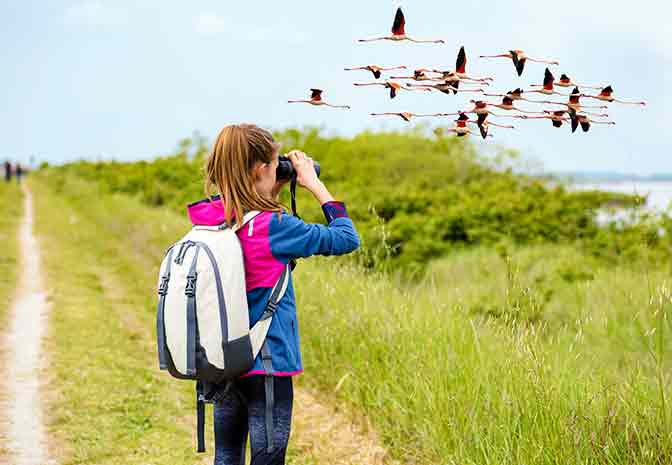Nature lovers may not immediately think of hopping across the Channel when deciding where to go on an animal inspired holiday, but there’s actually lots of great wildlife in France to spot during a trip to this diverse country. Here, we share some of our favourites!
Flamingos in the Carmargue

There’s nothing prettier than a sea of pink as far as the eye can see, and this is exactly what you’ll find when you visit the Carmargue. Located south of the lovely city of Arles, the Carmargue is home to a whole variety of wildlife, including beautiful flamingos which you can see in the Parc Ornithologique Pont de Gau. Here, scientists work hard to create an environment that flamingos thrive in, and people love to visit.
Flamingos gain their famous colouring from the plankton that they eat, and the pinker their colour the healthier they are. You’ll also find that they are brighter in the winter than in the warmer months. As well spotting typical flamingo behaviours, such as standing on one leg and their awkward flying style, you’ll have the chance to read the information boards that are dotted around which will teach you all about these striking birds and the other wildlife you can look out for.
The park has walkways and boardwalks that surround the lakes and offer uninterrupted views of the flamingos and their surroundings. There are also viewing stations that will hide you from the birds but enable you to see them, meaning that you can witness their natural behaviour. Around 20,000 flamingo couples nest here, so there are plenty of opportunities to admire them during your visit.
Chamois in the Pyrenees

Well-adapted to living in the mountains, chamois goats can be spotted when hiking in the Pyrenees, a mountain range that stretches between Spain and France. Able to climb steep cliff faces due to their ability to separate their ‘toes’ in order the gain good grip, chamois goats prefer to live at the base of mountains but are often driven to higher altitudes.
If you see a herd of chamois goats it is highly likely that it will consist of females and their young, as males tend to roam by themselves until mating season. The goats themselves are easy to spot due to their white faces with a black stripe underneath each eye. Their bodies are typically grey in the winter and brown in the summer, with a slight hump in their backs, and they have small, slightly curled horns which they keep all year round.
Chamois goats mostly eat seeds, flowers, and grass, but have also been spotted eating bark during the colder months when preferable food may not be easy to access. So remember to keep an eye out for them at all points of your mountain adventure.
Wild boar in France

A rise in the number of wild boar throughout France since the 1980s means that these ancestors of the domestic pig can be spotted across the country. However, the largest population seems to be throughout the north west, particularly in rural areas.
Wild boar live in groups of around 10 or 20, although you may sometimes see large groups containing up to 50 individuals. These are typically made up of female boar and their young, as males live a solitary life outside of the mating season. Wild boar piglets are born with chocolate and cream stripes which fade by the time they are 6 months old. They will then boast an adult colour of either light grey, brown, or black.
You are most likely to see wild boar in France during dusk or at night as they tend to rest for much of the day. When they’re active, they’ll be hunting for food which includes anything from plant matter to earthworms!
Ready to find some wildlife in France? Book your Dover to Calais crossing today and discover some of these awesome animals for yourself.



